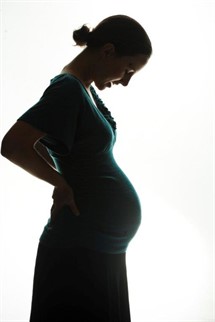by Stephen Ball
A big decision for a lot of parents is when to try for another baby.
The variation in timing can be enormous, from as little as a few months to sometimes more than ten years.

Major life events, decisions around employment, and simply recovering from the raising of previous kids can all be important factors.
But one thing parents may not think about is the impact of pregnancy spacing on the health of their kids.
Research has shown that pregnancies that start within two years of the birth of a previous child are at increased risk of preterm birth and low birth weight. In fact the World Health Organisation even recommends mums wait two years between the birth of one child and starting to try for the next.
It's believed that short intervals don't allow mums enough time to recover physically from the previous pregnancy, and that shorter time between bubs also doesn't allow mums to restore levels of important nutrients such as iron and folate.
But until now, our understanding of the effects of pregnancy timing has been based on comparing the birth spacing between different mums rather than birth spacing within the same mum…..and we all know that every woman is different.
At The Kids Research Institute Australia we took a completely new approach to looking at the effects of pregnancy spacing on preterm birth and low birth weight…..and decided instead to focus our research on individuals.
We looked at the births of more 40,000 Perth mums who each had three or more children between 1980 and 2010.
This provided a rich dataset with all sorts of combinations of pregnancy spacing, and enabled us to ask the important question: If a mum changes the spacing between pregnancies, does this change the risk of her child being born preterm or have a low birth weight?
If pregnancy spacing is important, we expected to find that for each mum, the child that follows the shorter interval would be at increased risk of preterm birth and low birth weight.

However, what we expected and what we found were two different things - instead of the shorter interval between births having an impact, we found it had almost no impact - in other words when we looked at births within the same mum, the timing between pregnancies had no influence on whether a bub was born preterm or had low birth weight.
These results challenge existing thinking about the effect of short intervals between pregnancies, and may put at ease some mums' fears about when they decide to have their second or subsequent child.
However as this is the first study to look at pregnancy spacing in this way the key now is to expand the research further to get a bigger and clearer picture of how the time between pregnancies can impact the health of the child.
It is worth remembering though that there are many factors that influence healthy pregnancies and the time between pregnancies is just one element.
Other influences such as lifestyle, background and health of the mother can also play important roles and these are all things that should be taken into consideration when deciding when is the right time for another bub.
As for the research, my hope is we can further expand this research project to also include developing countries so that as scientists we can build a much clearer picture when it comes to achieving the ultimate aim of giving new bubs the best start in life.
